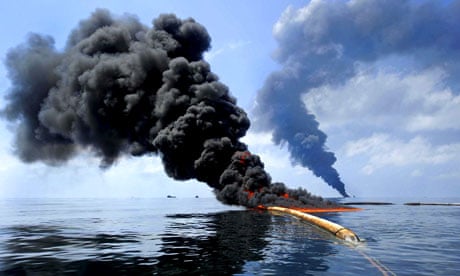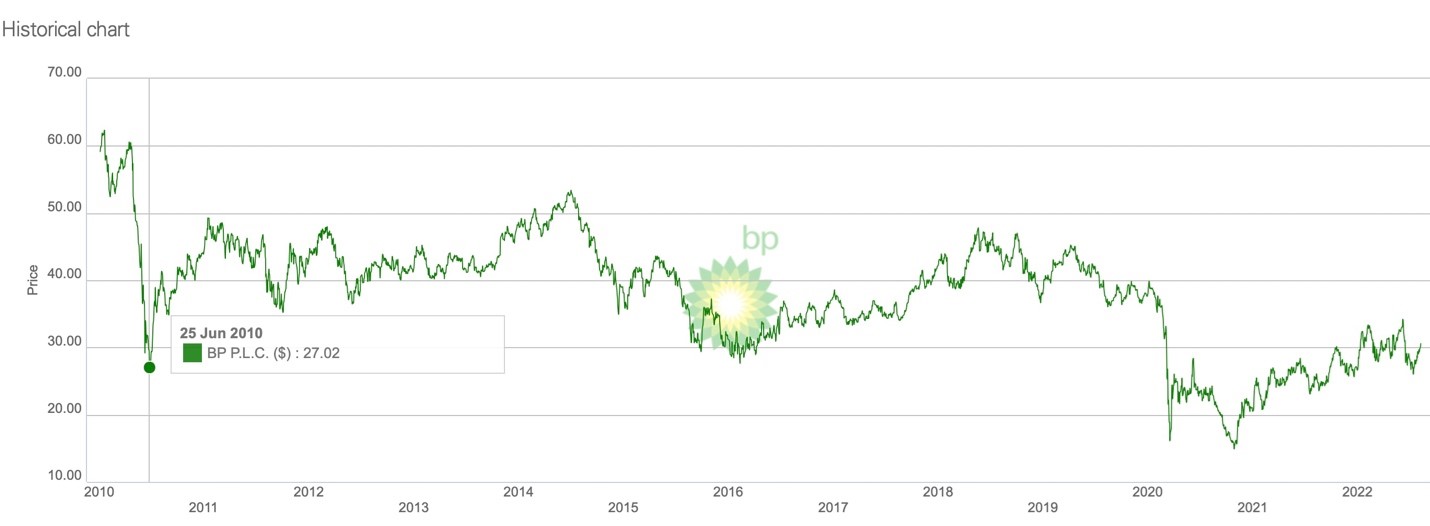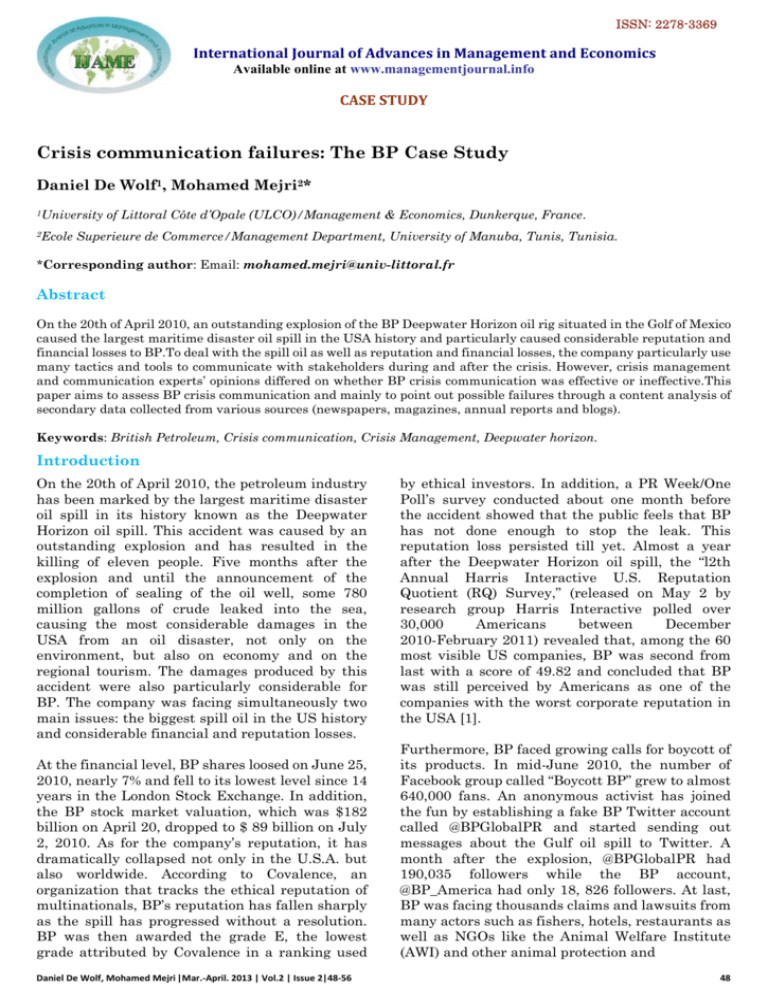To read this content please select one of the options below:
Please note you do not have access to teaching notes, crisis communication strategies: a case of british petroleum.
Industrial and Commercial Training
ISSN : 0019-7858
Article publication date: 30 September 2013
Every unexpected and sudden event (crisis) operates as a threat for an organization's reputation. British Petroleum (BP) came face to face with a crisis on 20 April 2010 when an explosion in the Deepwater Horizon oil drilling rig caused a huge oil spillage in the Gulf of Mexico. The present case study aims to describe BP's serious communication mistakes with its stakeholders managing a serious hit to BP's reputation.

Design/methodology/approach
The present case study attempts to provide a detailed outline of BP's communication failures by conducting in-depth investigation of secondary data (newspapers, audiovisual material, social network sites).
BP's crisis communication was a weak link in its crisis management strategy. The lessons to learn are various, both for practitioners and researchers. Practitioners should learn from the leadership, culture and public relations (PR) mistakes made by BP and avoid them in a crisis of their organisation. They should select those strategies that foster their organization's strengths and correct its weaknesses in order to take advantage of external opportunities and counter external threats.
Originality/value
This study could be a valuable asset in communication literature, since BP's PR strategies during this oil spill have not been studied extensively. The communications solutions BP took during the crisis were examined and certain strategies BP should have followed in order to avoid its failed PR plan are suggested, which can help both practitioners and researchers to learn from BP's mistakes and give more attention to communication strategies, which are of critical essence to all crises.
- Social media
- British Petroleum
- Crisis communication
- Public relations
Acknowledgements
Aikaterini Valvi's research is supported by a scholarship from the School of Business, Economics and Informatics, Birkbeck, University of London, UK.
C. Valvi, A. and C. Fragkos, K. (2013), "Crisis communication strategies: a case of British Petroleum", Industrial and Commercial Training , Vol. 45 No. 7, pp. 383-391. https://doi.org/10.1108/ICT-04-2013-0026
Emerald Group Publishing Limited
Copyright © 2013, Emerald Group Publishing Limited
Related articles
We’re listening — tell us what you think, something didn’t work….
Report bugs here
All feedback is valuable
Please share your general feedback
Join us on our journey
Platform update page.
Visit emeraldpublishing.com/platformupdate to discover the latest news and updates
Questions & More Information
Answers to the most commonly asked questions here
- International edition
- Australia edition
- Europe edition

BP oil spill blamed on management and communication failures
Bad management and a communications breakdown by BP and its Macondo well partners caused the oil disaster in the Gulf of Mexico , the White House oil spill commission said today. A report to the commission said safety lapses were "chronic" at the company and improvements to its systems still needed to be made.
In its final public deliberations before delivering its findings to Barack Obama next month, the commission said the fatal blowout on BP's well could have been avoided.
"The series of decisions that doomed Macondo evidenced a failure of management, and good management could have avoided a catastrophe," William Reilly, the co-chair of the investigation, said.
A report by expert staff said all three companies – BP, Halliburton, and Transocean – were guilty of bad management. "Most of the mistakes and oversights that led to the blowout were the result of management failures by BP, Halliburton Co, and Transocean Ltd," the staff concluded.
However, the commission singled out BP for failing to ensure its cost-cutting measures did not further increase risks in an already dangerous environment. Further unchecked cost-cutting would mean "financial pressures will likely bias decisions in favour of time and cost savings", technical staff said.
The report, which reviewed seven accidents in the US and UK over the past decade, said: "BP safety lapses appear to be chronic; its systems safety engineering and safety culture still need improvement."
The commission is holding its last public hearings today and tomorrow before delivering the official report on the blowout and clean-up effort to Obama in January.
The commission went on to fault the three companies for poor communications. It said they failed to share important information – which meant they did not fully appreciate the risks they were taking in the final days of the Deepwater Horizon.
But the blame did not stop with the oil industry. The commission said there were huge gaps in monitoring offshore drilling. Oil companies are not even required to report accidents unless they are on the scale of the blowout out at BP's Macondo well.
"Macondo wasn't the black swan. It wasn't a fluke," a staff member, Nancy Kete, told the commission. "There have been a lot of incidents that have been serious enough to trigger a panel investigation."
- Deepwater Horizon oil spill
- Oil (Business)
- Oil and gas companies
- Energy industry
- Oil (Environment)
Most viewed
- Skip to main content
- Keyboard shortcuts for audio player
The Message Makers: Inside PR And Advertising
Bp: a textbook example of how not to handle pr.
Elizabeth Shogren

In May 2010, then-BP CEO Tony Hayward gave a news conference at Fourchon Beach in Port Fourchon, La. Patrick Semansky/AP hide caption
Part of a series on the communications industry
Within hours of the Deepwater Horizon explosion, Glenn DaGian was on the phone.
He had retired a year earlier after working with BP and Amoco for 30 years. He wanted back in the game.
"Every day thereafter, for about a week, I kept saying, do you want my help, do you want my help?" he says.
DaGian watched from the sidelines as BP executives declared it was not their accident, blamed their contractors and made the company look arrogant and callous. The company's response has become a textbook example of how not to do crisis management.
"I was literally yelling at the TV set," DaGian says. "I thought that the first reactions should have been more humble and more conciliatory. I was very upset that they didn't apologize. It sounded like they were hiding behind the lawyers' skirts."
Still, when BP called DaGian about a week into the disaster, he jumped into his car. BP sent him as an ambassador to groups of fishermen and other people across South Louisiana.
DaGian, who grew up in southwest Louisiana, chokes up when he remembers the encounters.
"They were so scared that they were going to lose their way of life," he says. "I really got real emotional about it."
His accent signaled that he shared their roots. At one meeting, a retired history teacher asked if he knew they were descendants of French pirates, and that long ago, British pirates raped and plundered their ancestors.
"And then she squeezes my hand and she says, 'Tell me, son, does BP stand for British pirates?'" he says. "And I had to explain to her that, no, we were not British pirates, and BP meant well, and we would fix the situation."
'Every Day He Was Making A New Gaffe'
DaGian knew one reason for the company's colossal PR missteps. CEO Tony Hayward had slashed BP's public- and government-relations shop to cut costs. So, Hayward was listening to outside consultants and rookies. They let him walk the beaches in a starched white shirt.
They didn't muzzle him despite repeated insensitive comments, like this one: "There's no one who wants this thing over more than I do. You know, I'd like my life back."

Glenn DaGian, who recently retired after a 30-year career at BP and Amoco, says he was so angry at the company's crisis control effort that he was yelling at the television. He pitched in with the PR effort to try to help the company salvage its reputation. Elizabeth Shogren/NPR hide caption
When a group of Louisiana state officials asked about Hayward, DaGian let his exasperation show.
"I said, 'The only time Tony Hayward opens his mouth was to change feet,' " DaGian recalls. "It seemed like every day he was making a new gaffe. He didn't understand the animal that is the media. He didn't understand the public's perception of a foreigner in south Louisiana."
Current BP officials wouldn't comment on the record for this story. But people familiar with the inside of BP's crisis control effort and outside experts say early on, BP didn't have a public relations strategy. It failed to communicate the three key messages the public needed to hear: That BP was accountable for the disaster, was deeply concerned about the harm it caused and had a plan for what to do.
Experts also agree that Hayward's propensity to say the wrong thing made him the wrong choice to be the face of the crisis, and BP's board took too long to figure that out.
"Clearly he did not mean to be mean, even though in some cases he came across that way," says Glenn Selig, a crisis management consultant whose clients include former Illinois Gov. Rod Blagojevich.
Selig says the company's PR advisers didn't serve Hayward well. Instead of rescuing his image, a slogan the company launched with a slick ad starring its CEO made things even worse.
"We will get this done, we will make this right," Hayward says in the ad.
Selig says it was like a doctor in an emergency room full of dying people telling family members that everything will be fine.
"They were putting out this message saying, 'Trust us. We'll be able to make things right,' at a time when they obviously couldn't. The oil was gushing like crazy and they couldn't cap it. I think that that was a horrible misstep," Selig says. "It's very hard to believe that everything is going to be OK when you're still in a crisis. What we need to hear at that point is, 'We're doing everything we can to get it under control.' "
A 'Failing Grade'
Clarke Caywood, director of Northwestern University's graduate public relations department, is working on a book that delves into BP's crisis response fiasco. Caywood says it was bad public relations for BP executives to initially cover up both the seriousness of the accident and their inability to quickly fix it.
"They should have been prepared to admit that they didn't have it under control, because they didn't have it under control," Caywood says.
And later on, when scientists found signs of huge plumes of oil in the deep water, Caywood says, BP executives were wrong to deny their existence.
"They were either uncomfortable with telling the truth or unable to tell the truth," he adds.
Caywood says he'd give the company's crisis management effort a "failing grade."
"While I think the company will survive, its reputation has been irreparably damaged," he says.
The Benefit Of Social Media
BP does get some compliments for replacing Hayward with Mississippi native Bob Dudley, creating an independent $20 billion compensation fund and running television ads that feature Gulf Coast natives.
And BP insiders say the company quickly ramped up its social media campaign, which helped counteract earlier PR failures.
"I think they did a great job, considering the pressure they were under on so many other fronts," says Steve Marino, a BP consultant who worked for Ogilvy & Mather at the time.
Marino came on board in mid-May to lead BP's fledgling social media team. Before the explosion, BP had no dedicated social media staff and only a couple-hundred followers on Facebook. Marino set up a YouTube channel. He says the detailed technical briefings posted there helped people understand what BP was up against.
During the peak of the crisis, tens of thousands of people were following BP on Facebook, Twitter and YouTube. Marino says people's rage toward the company came through loud and clear.
"We let people vent their anger and their frustration on Facebook or in response to any of the tweets that we put up there," says Marino, who now works for MSL Group. "I think the best thing that social media did was to give people that outlet and allow people to feel that BP was hearing them, which they were."
Twitter gave BP a way to get its news out fast — without the media in the middle. And it created a new way to interact with traditional media.
On the day BP finally capped the well, Marino's team was monitoring CNN when an expert guest incorrectly told viewers that something was amiss.
"When we were on the phone with the producer from CNN, we literally just told them to read the most recent tweet, and they used that tweet to correct the story," Marino recalls. "It was great to see social media be able to, in real time, get the right information out about such an important critical moment," Marino adds.
Yet BP's image is still in tatters. And retiree Glenn DaGian is still trying to help rescue it by pushing BP to do more to restore the Gulf Coast.
"I want to be able to proudly tell people I worked for BP. I don't want people to snicker by saying we were an environmental corporate criminal," he says.
He is determined not to end up like the people he knows who worked for Enron. BP will start doing the right thing, or he'll become the company's biggest critic.
Related NPR Stories
Can bp tweet its way to a better image, around the nation, bp's pr doesn't make things right with locals.
- Case studies
- Premium content
- Call for contributions

A deep dive into BP’s Deepwater Horizon Spill: a case study
Under pressure – the disaster
Considered as the biggest marine disaster in history, on April 20 th , 2010, the Deepwater Horizon oil rig exploded in the Gulf of Mexico, killing 11 crew members working onsite. The rig eventually sank and damaged the pipe underneath and started to spew millions of barrels of crude oil into the gulf over the next four months. It contaminated about 400 square miles of the sea floor and 1,300 miles of shoreline of the Gulf of Mexico (DOI: 10.1002/jcaf.22306).
Search-and-rescue operations were executed on April 22 nd and within the same day, BP’s CEO Tony Hayward released a statement that they were determined to do everything to contain the oil spill and resolve the situation . When the rig capsized, BP’s initial response comprised of: 1) releasing of a small fleet of response vessels, 2) relief well planning, 3) skimming of oily surface water, 4) implementing protective boom to prevent oil from reaching the shoreline, and 5) placing chemical dispersants in the spill site to break up the oil and keep them from damaging marshes, mangroves, and beaches .
Efforts were made to seal the leaking well but were initially unsuccessful, and as a back-up, they have started drilling relief well in May. To reduce the leak, a tube tool was inserted into the ruptured riser pipe and containment cap was used to collect the oil and pump it to the gulf surface. On July 15 th , BP was able to stop the flow of oil for the first time in 87 days but was still under monitoring to ensure that the cap would stay in place. More than 2 weeks later, the US government announced that almost three-quarters of the spilled oil had been cleaned up, and on September 19 th , BP reported that the leak had been successfully and permanently plugged .
Several service providers (DOI: 10.1002/jcaf.22306) were involved in the offshore drilling operations of the Macondo well, the area of exploration where BP is operating. BP leased the rig from TransOcean, while the processes such as cementing the well and other critical functions were done by Sperry-Sun, Halliburton’s subsidiary. Other companies involved were Dril-Wuip, Oceaneering, M-I-SWACO, Cameron, and Weatherford.
Numerous investigations were held to find the root cause of the disaster, as well as the parties responsible for the damages. The BP report 2010, the Commission Report 2011 and the Joint Report 2011 concluded that the tragedy occurred due to a series of failures from the multiple parties involved in the operation. BP had been identified as the primary responsible for ensuring the safety and protection of personnel, equipment, natural resources, and the environment under the Oil Pollution Act (OPA). The other companies also shared the same accountability for violating several offshore safety regulations based on the Joint Report 2011.
It was revealed that the crisis has cost BP more than US$65 billion covering the total charges, net of reimbursements and recoveries, as well as insurance claims. However, a study (DOI: 10.1002/jcaf.22306) showed that the ultimate cost of the oil spill was twice what was reported in BP’s income statement, amounting to US$144.89 billion. The detailed computation included not just those mentioned above but also the hidden costs such as the revenue lost, unearned profit, and reputational damage. Needless to say, the spill also damaged fisheries, beaches, and coastal wetlands, including several species of birds, sea turtles, marine mammals, fishes, oysters, and other sea animals. A recent study showed that Gulf inhabitants such as brown pelican and menhaden fish have showed robust recovery while many species such as deep-sea coral, common loons, and spotted sea trout are still struggling to multiply.
The Deepwater Horizon spill also brought significant impacts to the economic activity in the surrounding communities. A research (DOI: 10.1007/978-3-030-11605-7_33) revealed that the total economic costs during the period of 2010-2020 of the foregone commercial fishing revenues and recreational fishing expenditures are loss of 25,000 jobs, US$2.3 billion worth of industry output, US$1.2 billion gross regional product, US$700 million labor income, US$160 million state and local tax revenues, and US$160 million federal tax revenues.
A deep well of learnings
Oil spills are not uncommon in the Gulf of Mexico but the magnitude of impact of BP’s Deepwater Horizon had been massive that it attracted so much attention from various stakeholders, not to mention the several missteps BP took as they navigated through the whole crisis. Here is the list of some lessons learned from the accident that, in some way or another, brought lasting impact on the safety of succeeding oil operations in the industry.
- Never learning enough from previous mistakes. In a high-risk business like oil-drilling, it is expected that large companies such as BP would have anticipated negative events in many of its operations. Even more so when there had been several accidents that happened prior the major oil spill. In 2005, BP’s refinery in Texas City exploded and their Thunder Horse rig in the same gulf got into an accident. In the following year, BP’s pipeline leaked in Prudhoe Bay. It was reported that BP was still paying for the violations in these previous disasters when the Deepwater Horizon spill happened .
- Culture of safety must be embraced by the whole industry. The disaster showed how neither the industry, nor the governments were prepared for risks involved in oil exploration. The investigations revealed how failures in following procedures to mitigate risks, and loose coordination among operators and regulatory bodies led to this disaster. It is important for organizations to understand that regulations are for their benefit, and it can provide level playing field for all stakeholders, especially during a crisis. In addition, regulations must be well-enforced, and penalties must be tantamount to the damages incurred in a disaster. Lax safety enforcement for the part of Minerals Management Service (MMS), the regulating body for offshore oil drilling, was found in the investigations. In fact, in the report released by the General Accountability Office (GAO), MMS showed a series of inconsistencies and omissions in their National Environmental Policy Act analyses and was described to lack organization, guidance, technical expertise, and qualified personnel .
- Plans must be prepared and reviewed to the highest standard possible. BP had MMS-approved Gulf Oil Spill Response Plan that detailed cleanup equipment and techniques, surface containment methods, and the use of chemical dispersants while missing out the more important parts of preventing or stopping a blowout. It was later found that BP’s response plan was written by the same contractor that prepared the plans for other oil companies such as ExxonMobil, Chevron, ConocoPhillips, and Shell Oil. Congressional inquiry described the plans as “cookie-cutter” that similar errors were found in some of the companies’ response plan . Furthermore, BP received a categorical exclusion for exploration plan for Macondo Prospect, allowing them to drill without preparing detailed site-specific environmental assessment based on the outdated assumption that “the impacts from the common operations are expected to be negligible to non-existent…”.
- Ensure that Business Continuity Plan includes third-party agreement. Several subcontractors involved in the Deepwater Horizon operations had made the already complex nature of the business even more complicated. Complex risks may arise from third party contractors and their capability to continue their operations. This is why it is important that critical suppliers must have Business Continuity Management arrangement in place. Furthermore, a robust action plans as part of collective response among suppliers in case of a disruption must be included in their contractual obligations. Had the employees well-informed of their responsibilities and safety actions, the death of 11 crew members would have been prevented. Had BP and its contractors have pre-arrangement contracts that included BCM, they would have not blamed each other and engaged in multi-billion dollar litigation after the accident.
- Communication is an integral aspect of crisis management. BP has become a textbook example of how not to handle public relations. Several studies evaluating BP’s actions in terms of crisis communication have been published following the major incident. Below is a quick rundown of both weaknesses and strengths of BP’s campaign (DOI: 10.1080/13527266.2018.1559218).
Digging deeper
Initially, BP’s several mishaps in managing the disaster making it easy for environmentalists, politicians, media, and other concerned individuals to paint the company as uncaring and greedy organization that cares for profits more than anything else . When the rig exploded and oil spill happened, BP was quick to shift the blame to TransOcean through their official statements, and the former CEO Hayward’s media interview. He said: “ This wasn’t our accident. This was a drilling rig operated by another company. It was their people, their systems, their processes. We are responsible not for the accident, but we are responsible for the oil and for dealing with it and cleaning the situation up.”
Lack of concern for the victims was also seen by many when there were reports that BP asked the cleanup workers and those who were affected by the spill to sign a waiver that would limit BP’s liability. This was during the ironic time that BP reported their 135% first quarter profit of $5.6 billion. The company also failed to be transparent, hindering people to build confidence and trust that they were on top of the situation early on. For example, the initial estimate of the leak was only 1,000 barrels per day, increased it to 5,000 barrel per day after more than a week, then later submitted a figure of 100,000 barrels per day to the Congress for investigation.
Lastly, former CEO Tony Hayward’s statements and actions attracted a lot of negative attention. In an interview with The Times of London, he mentioned that some victims would try to scam them for profit (Ibid) “I could give you lots of examples. This is America – come on. We’re going to have lots of illegitimate claims. We all know that.” Furthermore, he tried to downplay the damage caused by the accident by saying “ the Gulf of Mexico is a very big ocean. The amount of volume of oil and dispersant we are putting into it is tiny in relation to the total water volume.” He was also recorded saying in front of many reporters, “The first thing to say is I’m sorry. We’re sorry for the massive disruption it’s caused their lives. There’s no one who wants this over more than I do. I would like my life back.” He was later seen on a yacht off the Isle of Wight, 2 days after testifying before Congress.
The reputation repair
As BP struggled to find solution to stop the oil spill and its dwindling reputation, its share price and credit rating also grappled. The shareholder value of BP plummeted by 55% after the incident, from US$59.48 per share on April 19 th , 2010 to US$27 per share on June 25 th , 2010 . Furthermore, Fitch cut its credit rating from AA to BBB after US politicians demanded US$20 billion deposits in an escrow account to fund the damage claims for the oil spill as the agency was concerned about the ratio between long-term and near-term cost payments would become skewed towards the near-term cost . However, the meeting of BP’s executives with Obama in June was considered a turning point. BP’s Chairman Carl-Henric Svanberg told Obama: “ Our boat is keeling over right now. We’re not taking on water but we’re not far away. If you and the administration can be supportive going forward, that would help us do the right thing.” Obama responded that it is the country’s interest for the company to remain strong and viable to be able to fulfill its commitments . It was on this meeting that BP agreed to fund the US$20 billion escrow account, which investors received positively .
In the same month, BP hired Purple Strategies, a public affairs firm run by a Democratic and a Republican strategist, for its US campaign, alongside Anne Womack Kolton, a former US Energy Department official, to manage its US media relations. The new strategy team was able to showcase what BP had been doing for those affected by the crisis. Television, radio, and print campaign featured BP workers and Gulf Coast locals, volunteers, and BP officials. They were able to put faces on the real and human stories related to the incident. After the leak was plugged, they expanded the communication strategies to image-building by highlighting how BP was helping the Gulf Coast residents to get back to business as usual. They created two major campaigns – “Voices from the Gulf” and “My Gulf”.
Voices from the Gulf: Mississippi Fishermen
Voices from the Gulf: Louisiana’s Restaurant Owners
Voices from the Gulf: Florida Business Owners
My Gulf: Dawn Moliterno – Walton Tourism Development
My Gulf: New Orleans, Louisiana – Cooking the Perfect Gumbo
My Gulf: Josephine, Alabama: Shrimpin’ with Papa Roy
Another unprecedented albeit necessary decision happened in the following month, Tony Hayward, whose gaffes had enraged a lot of Americans, announced that he was stepping down as CEO and would be replaced in October by Bob Dudley, a Mississippi native who was in charge of BP’s clean-up response .
A year of change – the post crisis phase
Changing leadership amidst the crisis was a pivotal step for BP to redirect its direction through the crisis. Bob Dudley’s first tasks as the CEO were: 1) securing the company’s finances, 2) ensuring the safety of BP’s operations worldwide, and 3) restoring the environment of the Gulf Coast . He needed to sell BP’s oil and gas assets quickly, including their prized assets such as the Texas City refinery, Gulf of Mexico oilfields and Russian joint venture , and also do forward sale oil to safeguard BP’s future while meeting its commitment to the Gulf.
Guided by his principle of “value over volume”, Dudley cut the number of BP-operated upstream installation by 50%, the number of wells by more than 30%, and oil and gas reserves by 10%. In addition, he formed a new global Safety and Operational Risk team to instill the culture of safety in the company . Apart from the operation and culture, he mentioned in an interview that capital allocation and decision-making were also reformed . BP became “ inclusive, and modern place to work where leaders were encouraged to listen to the quietest voices in the room ”.
BP’s support to its business partners and people during the crisis did not wane but even strengthened. Dudley found that while several of BP’s partners such as banks were pulling away, there were some partners that were supportive and willing to help. Moreover, he also felt the need to rebuild the confidence of their employees in their company as he was worried that competitors might try to hire their talent away .
The oil company remained committed to environmental restoration. They provided up to US$1 billion for restoring natural resources that were impacted by the accident. In addition, BP has allocated US$500 million for a decade of support to independent research designed to provide better understanding of the Gulf ecosystem and industry. With the help of experts in high-hazard sectors such as nuclear energy, chemicals and the military, BP strengthened their operational risk function. Furthermore, they were able to design and prepare a capping stack that can be used in case another leak in deep water happens .
BP: A year of change
Rising above pressure
The post-crisis organizational reform was able to regain the investors’ trust as shown by the share price increase from June 29 th , 2010. Although the share has not gone back to its pre-oil spill crisis price at around US$60, it did not go below US$27 until the COVID-19 pandemic hit.

BP strengthened its finances after the crisis by cutting costs to reduce breakeven point while improving oil production . In 2017, Moody’s increased BP’s credit rating for the first time in 19 years citing the company’s resilience to oil price volatility and increased clarity in terms of the remaining cash payments related to the US$20 billion Deepwater Horizon settlement .
BP continued to acquire various projects including those that focus on natural gas such as shale gas production from about 200 wells in Oman , the natural gas production at Atoll gas field in Egypt , and several American oil and shale projects bought from mining firm BHP, its first major US investment since the oil spill , among others. Although only a small fraction of their total spending, BP started investing in renewable energy at around US$400 million a year. They invested in startup firms like Freewire, which possesses a technology that allow charging electric vehicles faster. It also acquired Chargemaster, UK’s biggest network of EV charging stations, as well as 43% share of Lightsource, Europe’s largest solar development firm . Like other oil companies, BP received several criticisms for doing inadequate efforts to reduce carbon emissions and increase renewable energy, especially that between 2016 and 2019, BP expanded its oil and gas production by 20% .
In 2020, BP announced that it aims to become a net-zero emissions company by 2050 or sooner. It revealed their commitment to a 10-fold increase in low-carbon investment or an estimate of US$5 billion per year, and a 20-fold increase in renewable generating capacity to 50 gigawatts . Headed by the current CEO Bernard Looney, who succeeded Dudley in February 2020, the oil giant plans US$25 billion in fossil-fuel asset sales by 2025, with US$15 billions of which has already been liquidated by unloading the Oman deal, oil and gas field in Alaska and the North Sea, and BP’s entire petrochemical operation . Although the company does not expect profits from its clean-energy business such as solar, EV-charging, and wind ventures until 2025, Looney continues to spend on renewable energy.
The Final Cap
To keep its commitment to meet its obligations in the Gulf of Mexico in spite of almost losing its whole business to the accident is praiseworthy; to move forward, learn its lessons, and transform into a better organization is even more admirable; but nothing can beat a well-prepared company that can prevent a crisis to happen, or at least mitigate the risks. The BP’s Deepwater Horizon Oil Spill is a great example of how return on investment of robust emergency response and business continuity programs can worth priceless.
In addition, the accident showed us that the most critical aspect of crisis leadership is clear and trustworthy communication. The goal of communicating during a crisis is not to lessen the uncertainty but to acknowledge it and the fear that comes with it. Transparency, honesty, and empathy are always the best policy.
If you liked this case study, you might also want to read this one .
Author: Lucil Aguada
RELATED ARTICLES MORE FROM AUTHOR

What I honestly think about ‘you’

Can we boycott Chiara Ferragni? The commentary on the crisis case

High cost of racism in high fashion: a case study on Dolce and Gabbana’s cultural appropriation

Humor and humility saved the chicken: the KFC logistics blunder

Volkswagen USA – Libertyville Case
Leave a reply cancel reply.
Log in to leave a comment

Domino’s Pizza, the toss and turn
High cost of racism in high fashion: a case study on dolce and gabbana’s..., netflix’s way: innovating resilience, business continuity and sustainability: why top management is key.

When you visit a website, it may store or retrieve information on your browser, mainly in the form of cookies. Check your personal cookie services here.
- wordpress_test_cookie
- wordpress_logged_in_
- wordpress_sec
- wordpress_gdpr_cookies_allowed
- wordpress_gdpr_cookies_declined
- wordpress_gdpr_allowed_services
- __wpdm_client
Welcome to About Resilience.
Click here to sign up for our premium content, which will grant you free access to our exclusive body of knowledge on organizational resilience, including proprietary research and industry resources.
- < Previous
Home > UGSCHOLARSHIP > UNDERGRAD_HONORS_THESIS_COLLECTION > UGTHESES > 90
Undergraduate Honors Thesis Collection
Communicating during crisis: a case study of the 2010 bp gulf oil spill.
Aubrey Nichole Villines , Butler University
Date of Award
Degree type, degree name.
Honors Thesis
Strategic Communication: Public Relations and Advertising
First Advisor
Rose Campbell
Crisis communication is an integral aspect of public relations that can have either positive or negative repercussions based upon the action that an organization responds. The manner in which an organization handles a crisis determines financial implications that may ensue, public perception and reputation of the organization, as well as the overall success or failure of the organization in the future. Consequently, Timothy Coombs asserts that the best crisis communication practice is to respond quickly, accurately, and consistently (Coombs, 2010: 28). Other scholars concur and add supplementary techniques which emphasize preparedness and responsibility. The present study was conducted to identify models of best practices for crisis management and to apply these models to analyze the effectiveness of BP’s response to the 2010 Gulf of Mexico oil spill. A content analysis of 164 articles from three newspapers, The Times Picayune, The New York Times, and The Herald (United Kingdom), was conducted to examine how BP responded to the crisis in the Gulf, as well as to compare differences in coverage of the crisis and response among the three newspapers. Results reveal that BP’s response incorporated both best practices of crisis communication, as well as crisis responses that could be categorized as unethical. Such unethical responses included evasion of responsibility, denial, and scapegoating, while effective crisis communication tactics consisted of updating the public in a clear, concise manner. Further results and implications for international crisis communication practices will be described.
Recommended Citation
Villines, Aubrey Nichole, "Communicating During Crisis: A Case Study of the 2010 BP Gulf Oil Spill" (2011). Undergraduate Honors Thesis Collection . 90. https://digitalcommons.butler.edu/ugtheses/90
Since October 06, 2011
Included in
Organizational Communication Commons , Public Relations and Advertising Commons
Advanced Search
Search Help
- Notify me via email or RSS
- Collections
- Conferences & Events
- Disciplines
- SelectedWorks Gallery
- Special Collections
Participate
- How to Participate
- Rights and Responsibilities
Home | About | FAQ | My Account | Accessibility Statement
Privacy Copyright
Crisis communication failures: The BP Case Study

Related documents

Add this document to collection(s)
You can add this document to your study collection(s)
Add this document to saved
You can add this document to your saved list
Suggest us how to improve StudyLib
(For complaints, use another form )
Input it if you want to receive answer
🇺🇦 make metadata, not war
Crisis communication failures: The BP Case Study
- Daniel de Wolf
- journal article
- http://purl.org/coar/resource_type/c_6501
- info:eu-repo/semantics/article
- peer reviewed
- Business & economic sciences
- General management, entrepreneurship & organizational theory
- Sciences économiques & de gestion
- Gestion de l’entreprise, entrepreneuriat & théorie des organisations
Similar works

Open Repository and Bibliography - Liège
This paper was published in Open Repository and Bibliography - Liège .
Having an issue?
Is data on this page outdated, violates copyrights or anything else? Report the problem now and we will take corresponding actions after reviewing your request.

Crisis Communication Failures: A Case Study of BP Deepwater Horizon
Added on 2023-06-03

End of preview
Want to access all the pages? Upload your documents or become a member.
Report on Oil Spill of British Petroleum in the Gulf of Mexico lg ...
Leadership and ethics in british petroleum (bp) oil spill disaster lg ..., environmental management in oil and gas industry lg ..., managing, leadership & stewardship assignment lg ..., assignment on strategic management of bp : case study lg ..., report on integration of business function lg ....

IMAGES
VIDEO
COMMENTS
and communication experts' opinions differed on whether BP crisis communication was effective or ineffective.This paper aims to assess BP crisis communication and mainly to point out possible failures through a content analysis of secondary data collected from various sources (newspapers, magazines, annual reports and blogs).
Crisis communication failures: The BP Case Study. On the 20th of April 2010, an outstanding explosion of the BP Deepwater Horizon oil rig situated in the Golf of Mexico caused the largest maritime disaster oil spill in the USA history and particularly caused considerable reputation and financial losses to BP.To deal with the spill oil as well ...
The present paper studies the BP crisis management of the Deepwater Horizon Disaster. which occurred on April 20 th, 2010. The authors content-analysed a large amount of. secondary data from ...
Every unexpected and sudden event (crisis) operates as a threat for an organization's reputation. British Petroleum (BP) came face to face with a crisis on 20 April 2010 when an explosion in the Deepwater Horizon oil drilling rig caused a huge oil spillage in the Gulf of Mexico. The present case study aims to describe BP's serious communication ...
Introduction. This paper discusses the application of key crisis communications principles by reviewing messages delivered during the BP Deepwater Horizon Oil Spill that began in April 2010. This particular case study was chosen for a variety of reasons, not the least of which is the substantial amount of media coverage of numerous ...
Thu 2 Dec 2010 14.18 EST. Bad management and a communications breakdown by BP and its Macondo well partners caused the oil disaster in the Gulf of Mexico, the White House oil spill commission said ...
In the 2010 BP oil spill crisis, Fragkos et al. (2013) also emphasized the cultural issue by attributing the failure of BP's crisis communication to distinguish the difference between British and ...
Abstract. This article introduces the special issue on crisis communication, whose aim is to bring together diverse approaches and methods of analysis in the field. The article overviews the field by discussing two main frameworks, dealing with postcrisis (reputation management) and precrisis (issue management) communication, respectively.
This case study investigates how British Petroleum dealt with the crisis that left lasting serious negative impacts on its brand and reputation. The investigation reveals that BP used a wide range of public relations activities to rebuild its reputation, but the company was not well prepared to handle such a disaster.
A 'Failing Grade'. Clarke Caywood, director of Northwestern University's graduate public relations department, is working on a book that delves into BP's crisis response fiasco. Caywood says it ...
It was revealed that the crisis has cost BP more than US$65 billion covering the total charges, net of reimbursements and recoveries, as well as insurance claims. However, a study (DOI: 10.1002/jcaf.22306) showed that the ultimate cost of the oil spill was twice what was reported in BP's income statement, amounting to US$144.89 billion.
Villines, Aubrey Nichole, "Communicating During Crisis: A Case Study of the 2010 BP Gulf Oil Spill" (2011). Undergraduate Honors Thesis Collection. 90. Crisis communication is an integral aspect of public relations that can have either positive or negative repercussions based upon the action that an organization responds.
BP-CRISIS-IJAME - Free download as PDF File (.pdf), Text File (.txt) or read online for free.
Purpose - Every unexpected and sudden event (crisis) operates as a threat for an organization's reputation. British Petroleum (BP) came face to face with a crisis on 20 April 2010 when an explosion in the Deepwater Horizon oil drilling rig caused a huge oil spillage in the Gulf of Mexico. The present case study aims to describe BP's serious communication mistakes with its stakeholders ...
ISBN: 978-1-4987-5134-6. Communication is such an intrinsic and universal aspect of crisis and emergency management and is of such significance to everyone involved in disasters (planners, responders, media professionals, victims and community members) that a book on this subject is likely to be of interest and practical help to a very wide ...
Crisis communication failures: The BP Case Study. Abstract On the 20th of April 2010, an outstanding explosion of the BP Deepwater Horizon oil rig situated in the Gulf of Mexico caused the largest maritime disaster oil spill in the USA history and particularly caused considerable reputation and financial losses to BP. To deal with the spill oil as well as reputation and financial losses, the ...
Conclusion Four lessons could be learned from the analysis of failures in the Deepwater Horizon crisis communication.At first, this case study shows that as many companies, BP seems to ignore the role of crisis communication, before, during and after the 54 Available online at www.managementjournal.info crisis.
Having an issue? Is data on this page outdated, violates copyrights or anything else? Report the problem now and we will take corresponding actions after reviewing your request.
Crisis Communication Failures: The BP Case Study . by Daniel De Wolf and Mohamed Mejri from . International Journal of Advances in Management and Economics . ... writing your own case study, you might look at how an exemplar case study was organized and formatted, and you might look at what information was included in each section. ...
This report discusses the crisis communication failures of BP Deepwater Horizon and the impact it had on the petroleum industry. It analyzes specific theories such as scientific and engineering and risk and management, and suggests solutions such as probability simulations and SWOT analysis.
Description. Case Studies in Crisis Communication: International Perspectives on Hits and Misses was created to fill the gap for a much-needed textbook in case studies in crisis communication from international perspectives. The events of September 11, 2001, other major world crises, and the ongoing macroeconomic challenges of financial ...